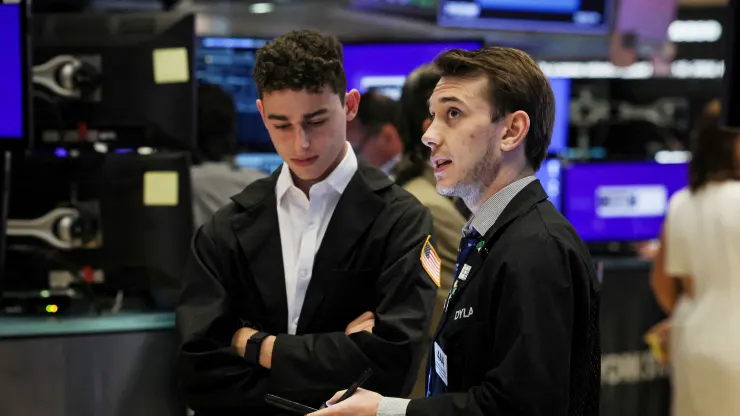Wall Street saw a dramatic shift in market trends on Thursday, with winning and losing stocks swapping places for a day. It may turn out to be just what the rally needs to keep going.
The Russell 2000 small-cap index, which has struggled to find its footing all year, jumped more than 3% on Thursday. At the same time, every stock in the so-called Magnificent Seven fell, including a more than 5% decline for Nvidia and a 2.3% drop for Apple, which dragged down both the S&P 500 and Nasdaq Composite.
Bespoke Investment Group shared two statistics on the social media site X to demonstrate how rare it is to have that type of split.
- Thursday was just the second day since 1979 when the Russell 2000 rose more than 3% while the S&P 500 declined.
- The Nasdaq Composite underperformed the Russell 2000 by more than 5 percentage points in what appears to be biggest daily gap on record. The only other time the gap came in above 5 percentage points was in November 2020, right after Pfizer shared positive results from a Covid-19 vaccine trial.
While the major market averages and many individual 401(k) accounts may show a decline for the day, this odd set of results could be a positive sign for the market. Much of the recent rally has been driven by large tech companies, leading investment pros to worry about a narrow group of stock market leaders.
“Today’s an important day,” Ed Yardeni of Yardeni Research said on CNBC’s “Closing Bell. “This is the day where investors are starting to rotate out of the Magnificent Seven into the rest of the market. I don’t think this is going to continue to pull the S&P 500 down — I think there’s going to be enough money to keep the leading stocks that have done so well fairly elevated, but I think we are going to see more gains in the S&P 493, as well as in the small- and mid-cap stocks,” he added.
The split trading came after the June report for the consumer price index early Thursday showed headline inflation declined last month and is now up about 3% over the past year. That bolstered confidence that the Federal Reserve will begin to cut interest rates as soon as September. Federal Reserve Chair Jerome Powell indicated in Congressional testimony this week that the central bank was aware that holding rates high for too long could hurt the economy.
“Investors are rotating. They’re jumping from the large-cap tech lily pad on to the mid- and small-cap pads, along with real estate,” Sam Stovall, chief investment strategist at CFRA Research, told CNBC. “They had been waiting for maybe not a guarantee, but certainly a confirmation that the Fed is likely to start to cut interest rates, and will be doing so not in reaction to a recession.”
Activity in the bond market supports this idea. Yields on U.S. Treasurys were down across the board on Thursday, meaning government bond prices were rallying.
“You’ve got positive CPI on the back of a slightly dovish Powell,” Ross Mayfield, investment strategy analyst at Baird, told CNBC. “Rates are down big, and you have kind of a rotation trade. But the problem with the market being so concentrated in Big Tech is that rotation trade can look like a surface level negative. And I think we’re seeing some of that today,” he said.
There have also been signs in recent months that the U.S. economy is softening. A slow growth or recessionary environment would be tough for small-cap stocks, which tend to be more economically sensitive and domestically oriented than larger companies.

